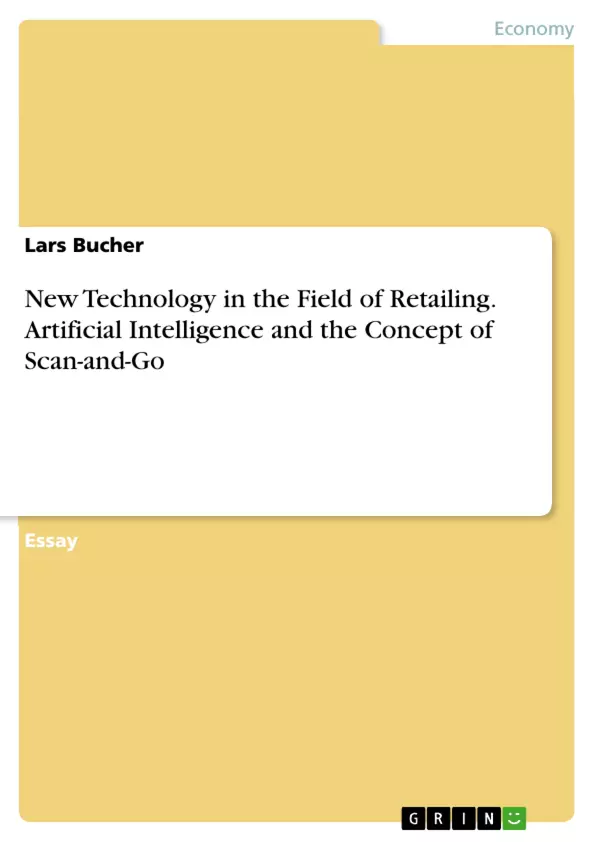Digital technology is an extremely disruptive factor for our modern world and for the way companies operate. The success of social networks, as well as the growing importance of platform businesses and e-commerce, would not be possible without digital technology. But people have already become accustomed to the existence and functioning of social media and amazon as a gigantic marketplace. How will new digital technologies and especially Artificial Intelligence (AI) change retail?
Inhaltsverzeichnis (Table of Contents)
- INTRODUCTION
- IMPACT AREAS OF NEW TECHNOLOGIES IN RETAILING
- USE CASES OF ARTIFICIAL INTELLIGENCE: SCAN-AND-GO
- FUTURE OUTLOOK: CONNECTING SERVICES.
- CONCLUSION.
Zielsetzung und Themenschwerpunkte (Objectives and Key Themes)
This document aims to explore the impact of new technologies, particularly Artificial Intelligence (AI), on the retail sector. It examines how AI is being implemented in various areas of retail, focusing on the example of Scan-and-Go. The text also discusses the potential future implications of connecting services through digital technologies.
- The influence of digital technology on the retail industry.
- The use of AI to optimize retail processes and enhance customer experience.
- The impact of scan-and-go technology on customer behavior and retailer strategies.
- The potential for integrating various services through digital platforms.
- The importance of balancing customer privacy with the benefits of personalized services.
Zusammenfassung der Kapitel (Chapter Summaries)
- Introduction: The introduction highlights the transformative power of digital technology in the modern world, particularly within the retail sector. It raises questions about the potential impact of Artificial Intelligence (AI) on retail practices.
- Impact Areas of New Technologies in Retailing: This section examines the various ways new technologies can be applied to optimize retail operations. It focuses on AI's role in improving internal processes, supply chains, and customer service. The text discusses the potential for AI-driven personalization and the need for companies to maintain a balance between customer privacy and data use.
- Use Cases of Artificial Intelligence: Scan-and-Go: This chapter explores the application of AI in retail, including optimizing supply chains, predicting product demand, and providing customer assistance. It introduces the concept of Scan-and-Go, showcasing how Amazon Go uses sensors and cameras to automate the shopping experience, eliminating traditional checkout processes. The chapter also analyzes the potential advantages and disadvantages of Scan-and-Go for both customers and retailers.
- Future Outlook: Connecting Services: This section envisions the future of retail, highlighting how digital technologies can be integrated to offer customers more personalized and comprehensive services. It uses the example of the HealthMe app, which utilizes customer allergy and dietary information to guide their shopping choices. The chapter suggests that integrating such services into Scan-and-Go could create a more customized and convenient shopping experience.
Schlüsselwörter (Keywords)
The main keywords and focus topics of this text include: Artificial Intelligence (AI), retail technology, scan-and-go, customer experience, personalization, data privacy, digital services, and connected retail.
- Quote paper
- Lars Bucher (Author), 2021, New Technology in the Field of Retailing. Artificial Intelligence and the Concept of Scan-and-Go, Munich, GRIN Verlag, https://www.grin.com/document/1191419



